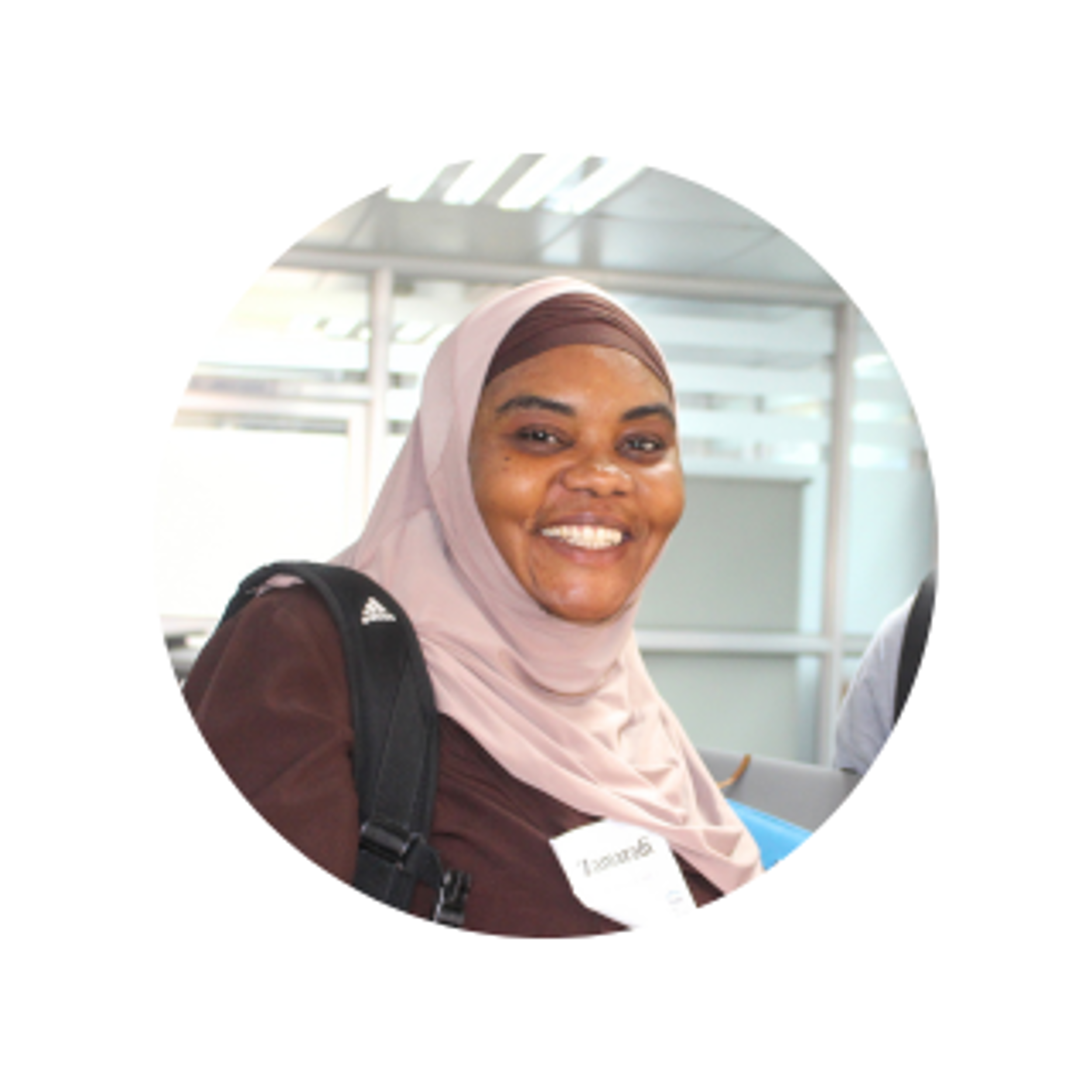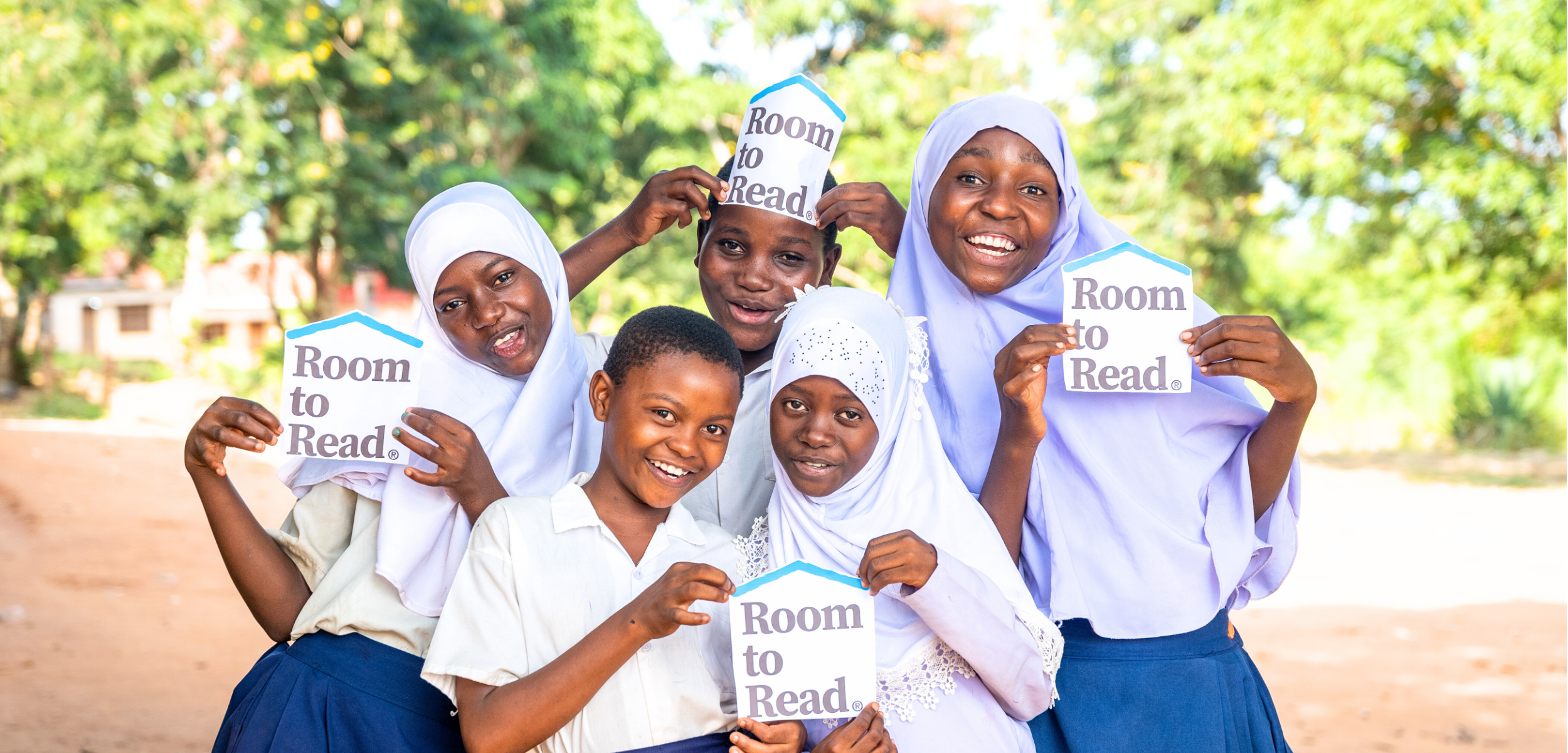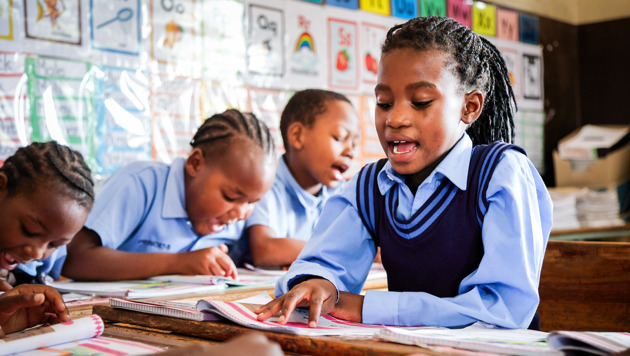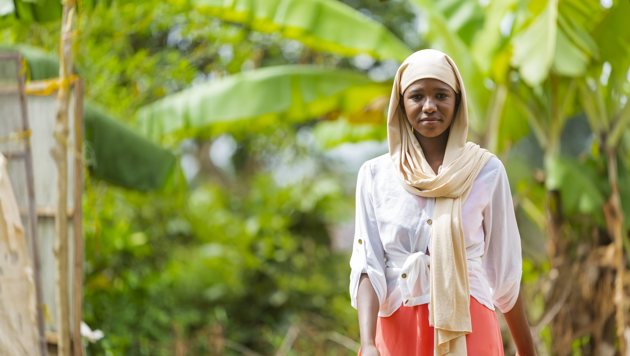Girls’ education in Africa: The most powerful investment we can make
May 21, 2025

By Zamaradi S. Islahi
Global Director
Room to Read’s Gender Equality Portfolio
“My story is not unique. And that’s exactly why it matters. There are millions of girls in Africa with dreams just as bold, who only need the opportunity to learn and grow.’’
I was born and raised in Africa, and I have witnessed firsthand the many barriers girls face simply to access — much less complete — an education.
I grew up in a low-income, Islamic household, in a community where no girl had ever advanced beyond Grade 7. In that environment, simply being a girl meant starting life at a disadvantage. My gender, intersected with poverty, cultural expectations and deeply rooted social norms, created a complex web of obstacles that threatened to prevent me and girls throughout my community from reaching our full potential.
Education was not considered a priority for girls when I was a child. The dominant belief was that a girl’s rightful place was in the kitchen — not in the classroom; in her husband's home — not in school. Many of my peers were married before they even turned 15. Others simply disappeared from school systems that were never designed for them to thrive.
I was determined to break that cycle.

In secondary school, the challenges only intensified. Like many girls, I battled poverty. I narrowly escaped early marriage. And I navigated the constant pressures of gendered expectations.
Early pregnancies, harsh discipline and the inability to afford school contributions, transportation and learning materials were common stories around me. Some girls were forced to stay home from school because their families could not afford transport fare. Others left school forever.
One significant barrier to girls' education in Africa is the prevalence of gender-based violence in and around schools, including harassment, abuse and exploitation, all of which creates unsafe learning environments and leads many girls to drop out. Harmful cultural norms, including initiation practices that mark the transition to womanhood, often signal the end of a girl’s education. Together, these factors perpetuate cycles of inequality and limit the transformative power of education for girls and their communities.
Menstrual hygiene is another silent struggle. When I was a girl, we lacked proper facilities, clean water and safe spaces for disposal. Many of us suffered recurring infections like UTIs. The use of temporary sanitary towels would block toilet plumbing, making washrooms unsafe and uncomfortable.
Despite it all, I held onto a dream — a dream that defied the odds. I saw education not just as my way out of poverty, but as a powerful force to challenge the status quo, transform lives and rewrite the narrative for girls like me. I believed that if I could make it, I could pave the way for others to follow, proving that where you come from should never define how far you can go.
My story is not unique. And that’s exactly why it matters. There are millions of girls with dreams just as bold, who only need the opportunity to learn and grow.

Girls’ education in Africa is not just a moral obligation — it’s a transformative investment
Millions of girls across Africa still face barriers to education. These are not just personal or cultural challenges. They are structural and systemic:
- Poverty: Families often can't afford school fees, uniforms or menstrual hygiene supplies.
- Early marriage and pregnancy: Still a leading cause of school dropouts for girls in many regions.
- Inadequate school infrastructure: Unsafe or unsanitary conditions push girls out.
- Social norms and expectations: Girls are often expected to shoulder the burden of caregiving or housework instead of attending class.
And yet, we know that these challenges are not immovable. They are choices — policy choices, funding gaps and cultural narratives — that we can and must change.
At Room to Read, we know that education changes everything. It empowers individuals, uplifts families and transforms entire communities. When a girl is educated, her agency and decision-making skills are enhanced. She’s more likely to delay marriage, raise healthier children, earn a stable income and lead within her society.
Evidence from the UNESCO Global Education Monitoring Report shows that educated women are more likely to work, earn higher incomes, invest in their children’s education and contribute meaningfully to economic growth. In fact, closing the gender gap in education could boost African economies by trillions of dollars over a single generation. The impact is not only personal, it’s profoundly economic and societal.

Education is the most powerful tool to end illiteracy and gender inequality. It’s not just about getting children into school — it’s about creating a world where every child, regardless of their gender, has room to read, learn, grow and thrive. Through our Gender Equality Portfolio, Room to Read supports adolescents — particularly girls — to build life skills that promote gender equality, ensuring girls build confidence and have the tools to overcome challenges, advocate for their rights and build brighter futures for themselves and their communities.
We do this through life skills education, mentorship, and community and family engagement, working with caregivers to challenge and change harmful gender norms. By sharing our best practices, we also work to influence lasting, system-level change in the countries where we operate.
Room to Read’s investment in girls’ education in Africa proves the ripple effect firsthand. Our programming has paved the way for young women in remote villages and cities who now run businesses, teach in schools and speak on global platforms — all because someone believed in their right to learn and thrive.
The transformative impact of girls’ education in Africa and around the world: What the data tells us
The long-term impact of investing in girls’ education in Africa and across the globe is undeniable — and the data proves it. Through our sustained investment in girls’ education, we’ve gained compelling evidence that educated women are more likely to work, earn higher incomes, invest in their families and contribute meaningfully to economic growth. Our Girls’ Education Program alumnae reports, which track outcomes for graduates one and five years after graduation, provide valuable insights into how education continues to transform lives well beyond secondary school.
Findings from our 2024 Tanzania Alumnae Survey highlight these long-term impacts:
- Delaying early marriage: An overwhelming 90% of first-year alumnae (average age 18-25) reported being unmarried. This aligns with global evidence showing that education is one of the most effective tools for delaying early marriage and empowering girls to make informed life choices.
- Increased access to higher education: The percentage of young women who completed tertiary education or professional training doubled — from 33.3% in the first year after graduation to 66.7% in the fifth year after graduation. This speaks to the sustained benefit of support beyond secondary school and the growing ambition of educated girls.
- Greater economic empowerment: Among alumnae who are employed or running a business, the proportion earning a sustainable income grew from 61.5% to 65.4% over the same five-year period, showing steady progress toward financial independence and resilience.
These positive trends echo what global research has long affirmed: girls’ education in Africa is one of the most powerful drivers of economic growth across the continent. The UNESCO Global Education Monitoring Report also underscores that educated women are more likely to be employed, earn higher wages, invest in their children’s education and contribute meaningfully to their communities and national economies.
- Creating a ripple effect: Educated women don’t just uplift themselves, they lift others as they rise. The percentage of alumnae supporting other female family members financially rose from 73.8% to 77.1% between year one and year five post-graduation. This “pay-it-forward” effect reinforces what we know to be true: education multiplies impact across generations. Just one additional year of schooling can increase a girl’s future earnings by up to 20%, and that income is more likely to be reinvested into her family’s health, education and well-being.
The Mastercard Foundation’s 2024 report, “Young Women in Africa: Agents of Economic Growth and Transformation by 2030,” emphasizes this point: enhancing the productivity and agency of young women could unlock $287 billion in economic value by 2030 — a potential 5% increase in Africa’s total GDP.
These findings affirm a simple truth: when we support girls to stay in school and succeed, the return on investment is lasting societal, continental and intergenerational change.

Girls’ education in Africa is a proven, smart, scalable solution
We often speak of education as a basic human right — and it is. But we must also understand that educating girls is one of the smartest investments Africa can make for long-term development.
As the former manager of Room to Read’s Girls’ Education Program in Tanzania, I saw firsthand what truly works. Our focus extended beyond getting girls into school — we prioritized keeping them there, ensuring they were safe, supported and set up to succeed.
We engaged teachers, communities and government partners to challenge harmful gender norms and shift the structures that maintain inequality and hold girls back. At the heart of our work was empowerment: equipping adolescent girls with the knowledge, skills and confidence to make informed decisions about their lives, and to shape the futures of their communities.
Now, as I lead Room to Read’s Gender Equality Portfolio in Africa, I see the impact of our work scaling across borders, from life skills tutoring and mentorship circles to advocacy and system reform. One of our most exciting innovations is She Creates Change, a multimedia storytelling initiative that uses the inspiring true stories of change-making young women from around the world to support adolescent girls — and children of all genders — in building essential life skills that promote gender equality. Currently implemented in Kenya and Malawi, and expanding to Uganda, Nigeria and South Africa by 2026, the initiative helps girls build critical thinking, resilience, leadership and decision-making skills, tools they need to navigate challenges like climate justice, financial literacy, sexual and reproductive health, and harmful social norms.
We are proving every day that girls’ education in Africa and around the world isn’t just possible — it’s powerful.




